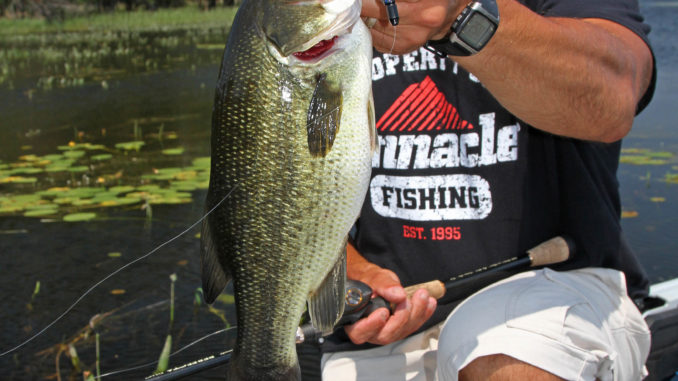
Frog baits account for some of the most-exciting strikes you’ll see in the pads. Most work well right out of the package, but a few tweaks can help sell the ruse.
Trim the legs. Shortening the profile decreases wind drag for longer casts, while also minimizing water drag for better walking along the perimeter and in those open lanes. Trimming methods vary with personal perspective, but for a good rule of thumb, pull the leg strands up to the frog’s front end and trim the even with the nose. Thinning a few strands may also help.
Sound off. Inserting rattles into the frog’s body increases the audible appeal and helps fish track the target running overhead. Heavy tungsten beads also add weight for increased casting distance and a deeper bait profile that displaces more water.
Hook alignment. For optimal connections, open the hooks outward when working sparse pads, the perimeter or open areas. When you’re fishing the heavier cover of the interior pads, you’ll want those hooks tight to the body where the frog’s design prevents snags. Some fishermen go as far as to bind the shanks of their frog hooks with braided line for optimal strength and rigidity in the thick stuff. A hooked fish will leverage the entanglement of pad stems for hook removal, so minimizing the flex of a frog’s double hook lessens the chance of self release.
Make your mark. Use permanent markers to add stripes, spots, and even red blood lines to your frog’s belly. Subtle is usually best, but don’t hesitate to experiment, especially when a good frog bite dwindles. The fish might still be interested, but once they’ve seen the same look a few times, they might need some variety.



Be the first to comment